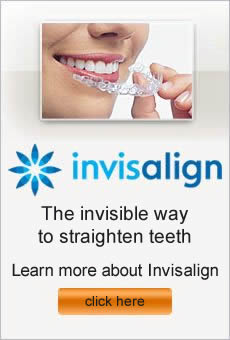While wearing braces can give you a stunning smile, most people don’t look forward to the process. Though the end result might be worth it, braces aren’t a lot of fun. These tips will help you get through your orthodontic treatment like a champ.
Get the facts
Find a good orthodontist and have a full evaluation so that you can discover exactly what kind of treatment you need. Don’t be afraid to ask for clarification or get more information if something is unclear.
Review your options
Though many kids and teens still wear traditional braces, other orthodontic options exist for adult and older teen patients such as self-ligating brackets, clear brackets, and Invisalign clear aligners.
Follow directions
Your treatment time will progress on schedule if you wear rubber bands, keep appointments, and completely listen to the orthodontist’s instructions. On the flip slide, you may have to wear the braces even longer if you don’t comply with what the orthodontist says.
Focus on the goal
Remember that your time in braces is temporary and has a definite purpose. After treatment, you will achieve a stunning smile that will provide years of enjoyment. Those one or two years in braces will seem like no time at all.
We care about your smile at our Sherman Oaks, CA orthodontic office – Mehdi Fotovat, DDS.
Often, people decide to seek orthodontic treatment because they want straighter teeth. Usually, your teeth are out of alignment because of a malocclusion, or bad bite. Several different bite issues exist that may cause you to need orthodontic treatment. Your orthodontist will examine your entire mouth and recommend the best course of treatment to give you a straight, healthy smile.
Types of malocclusions include:
Crowding
When you don’t have enough room in your mouth to accommodate your teeth, crowding occurs. Not only do crowded teeth look less attractive, but they also compromise your oral health by making it harder to brush and floss.
Overbites
Also called a deep bite, an overbite is a situation where the front teeth dramatically cover the lower teeth. Without treatment, an overbite can lead to excessive tooth wear.
Underbites
Caused when the lower jaw is longer than the upper jaw, an underbite makes the bottom teeth protrude in front of the top teeth.
Extra Space
If teeth are small or missing, you can end up with too much space. Though this issue is often cosmetic, you should have extra space evaluated by an orthodontist.
Open bite
Usually caused by a habit such as tongue thrusting or thumb sucking, an open bite is when an individual can stick his or her tongue between the teeth while biting down.
Protruding Teeth
Sometimes, the upper teeth come too far forward or the lower teeth don’t stick out far enough, which is called protruding teeth.
It’s time to schedule a visit to our Sherman Oaks, CA orthodontic office – Mehdi Fotovat, DDS.
If you or a loved one would like a flawless smile, modern orthodontic care offers various treatment options. Patients can decide on dental therapy that suits their needs and budget. Understanding the different choices will help you make an educated decision about your orthodontic care. If you have any questions, make sure to talk with your orthodontist before making any final decisions.
Traditional Metal Braces
A long-standing form of treatment, metal braces are still a popular choice, especially for kids. At our office, we offer GAC in-ovation-braces self-ligating braces. These braces have smaller brackets than traditional metal braces, and require less trips to the orthodontist with faster results.
Clear Brackets
For patients who don’t like the look of metal braces, we offer in-ovation-braces C (clear) brackets. These translucent brackets blend in with your teeth coloring so that they are less noticeable. These braces are designed to resist staining and the self-ligating brackets result in fewer office visits and shorter treatment time over traditional braces.
Invisalign Clear Braces
For adult and older teen patients, Invisalign clear braces offer an easy, inconspicuous way to straighten teeth. The Invisalign system uses a series of clear, custom aligners to gradually shift your teeth in just 12 to 18 months.
Mehdi Fotovat, DDS. Sherman Oaks California orthodontics – we care about you and your smile!
After you finish corrective orthodontic therapy, your treatment probably won’t end. Most orthodontists recommend retainers for their patients. Because teeth have a tendency to shift back after treatment, this orthodontic device helps keep your teeth in the right position. Your orthodontist will determine how long you need the retainer for successful results, but patients often wear retainers for 12 to 24 months.
A retainer can be fixed or removable. As well, your retainer may be clear plastic or attached to a light-colored base with metal wires. Often, the top retainers can be taken out, but the ones for bottom teeth are cemented in place for the duration of treatment.
Once your braces come off, your orthodontist will take impressions of your teeth and use these molds to generate your retainer. Initially, you may need to wear your retainer at night and during the day. Your orthodontist will monitor your progress and adjust that schedule accordingly.
When you have a retainer, it’s important to take proper care of your appliance. Remember to:
• Keep the appliance in a safe place. You will probably receive a case, so make sure to put the retainer away when you aren’t wearing it.
• Clean your retainer. Part of good oral hygiene is brushing or soaking your appliance to remove germs and bacteria.
• If it breaks, contact your orthodontist right away. Don’t try to fix the retainer yourself because you may do more damage.
• Take your removable appliance out to eat or brush.
If you’re looking for an Orthodontist in Sherman Oaks CA, contact us to schedule a consultation. Dr. Fotovat – Burbank Orthodontist – WebBraces.com
If either you or your child needs braces, you should schedule a visit to an orthodontist. At this appointment, the orthodontist can examine your mouth and make recommendations for treatment. Much of the terminology may seem confusing. The following list of terms should help you understand orthodontic basics.
Arch wire
Attached to your brackets, this metal wire helps shift your teeth into the correct position.
Biomechanics
A term that describes the relationship between the force you apply to your teeth and how they move or change.
Crowding
An orthodontic problem that occurs when you have too many teeth in too small an area and results in overlapping teeth.
Dentition
Often used by dentists and orthodontists, this is a term for teeth, gums, and bone.
Fixed appliance
When orthodontic devices are cemented to your teeth, they are considered fixed appliances.
Interceptive orthodontic treatment
Also called Phase 1 treatment, interceptive orthodontic treatment is often performed on patients 6 to 10 years old. The goal of early treatment is to address issues that respond best to therapy while a child is still growing. A second phase of treatment may be needed later.
Malocclusion
The general term used to describe bite problems.
Palatal expander
Sometimes necessary in orthodontic therapy, a palatal expander will make your upper jaw wider.
Retainer
Either a fixed or removable device, a retainer is an orthodontic appliance that will help keep your teeth in the desired position after you finish corrective orthodontic treatment.
Wax
The clear material placed over braces to keep the metal from irritating your gums and mouth.
Giving our patients something to smile about at our Sherman Oaks, CA orthodontic practice – Mehdi Fotovat, DDS.



